Floods account for almost half the deaths in India due to extreme weather events in the past 50 years
In the past two decades, freak weather events such as floods, tropical cyclones, heat waves, cold waves and lightning have risen. Odisha, Andhra Pradesh, Assam, Bihar, Kerala and Maharashtra have the highest mortality, shows a recent Union ministry of earth sciences study.


141,308 people killed due to 7,063 extreme weather events in India in the past 50 years. Pic: Water Vagabond
In the past 50 years, 7,063 extreme weather events have been recorded in India. That is about 21 every year. They killed 141,308 people between 1970 and 2019 — 2,826 deaths every year. Floods were the most frequent freak weather event, followed by lightning, heat waves and cold waves. Cyclones were least frequent.
These are some of the key findings of a recent study — ‘An assessment of long-term changes in mortalities due to extreme weather events in India: A study of 50 years’ data, 1970–2019’ — by the Union ministry of earth sciences, published in volume 32 of Weather and Climate Extremes journal.
It found that maximum mortality (46.1 per cent) was due to floods followed by tropical cyclones at 28.6 per cent. However, over the decades, despite a significant rise in such extreme events , there has been a decrease in mortality rate. Mortality rate is defined as mortalities per year per million population.
“We wanted to document the evolution of extreme weather events and corresponding fatalities using the best available data. This paper is the result. We need to document such changes and trends to make relevant policies for disaster management,” M Rajeevan, secretary, Union ministry of earth sciences, and co-author of the research paper, told Gaon Connection.
“The increase in frequency of extreme weather was expected. However, the number of fatalities has not increased due to better forecasts and warnings,” he added.
For instance, the number of mortalities per event had a significant negative trend for heatwaves and floods. The total extreme weather events had a mortality rate of 3.86 during 1980–1999 and it reduced to 2.14 during 2000–2019. The mortality rate of tropical cyclones reduced by 94 per cent in the past 20 years, whereas for heatwaves and lightning it increased by 62.2 per cent and 52.8 per cent, respectively.
Meanwhile, the study found Odisha, Andhra Pradesh, Assam, Bihar, Kerala, and Maharashtra reporting the maximum mortality rates due to such freak events in the last two decades. “… thus there is a need to consider these states with priority for developing disaster management action plans,” reads the paper. It goes on to add that the paper provides “a vulnerability assessment of geographical regions and can be used for better disaster management (see Map: Decadal extreme weather events per year and mortality rate (deaths/million/year) during the period 1970–2019).
Map: Decadal extreme weather events per year and mortality rate (deaths/million/year) during the period 1970–2019
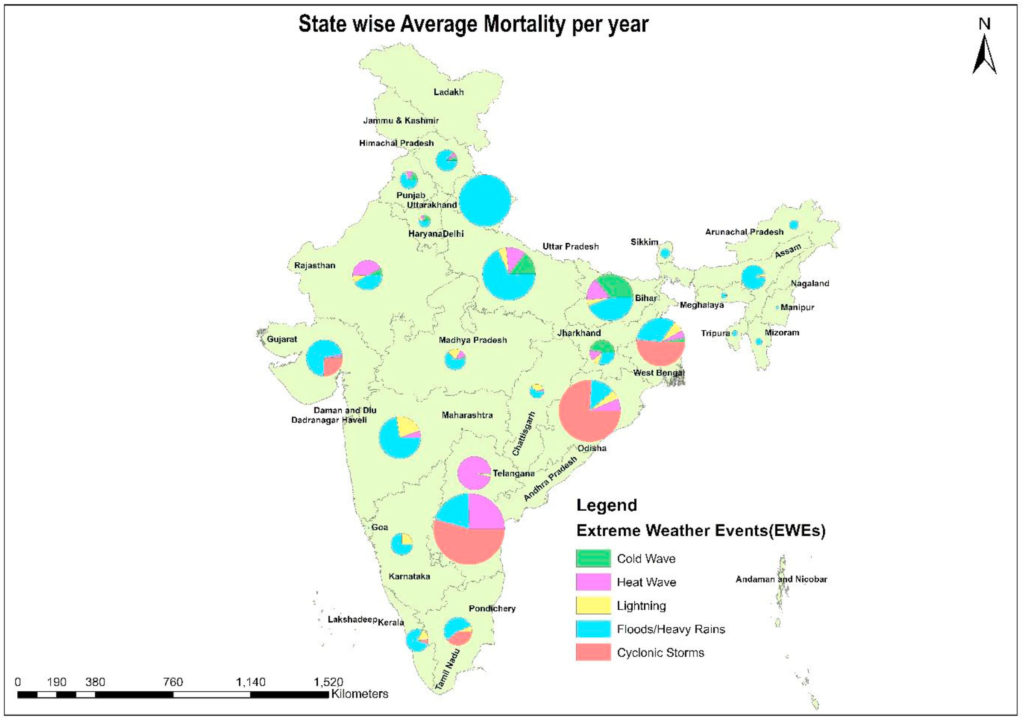
Rise in extreme weather events
In the past few decades, extreme weather events such as heatwaves, cold waves, tropical cyclones, floods, lightning and heavy rainfall have reported a rise attributed to global warming and climate change.
Take the case of the year 2019 — 73 heatwave spells were recorded in the summer against a normal of 17 (average during 1986–2016). Till July 2019, there was a deficit in Indian summer monsoon rainfall, but in the second half of the monsoon season (August onwards), there was excess rainfall, leading to extreme floods in several states. Also, 11 tropical cyclones developed over the north Indian Ocean, as against the normal two. The year ended with extreme cold wave spells over northern India during December.
This trend has been continuing for sometime, notes the recent study. The decade between 2007 and 2016 reported an 18 per cent increase in annual extreme weather events as compared to the previous decade (1997-2006). A significant rising trend in the frequency and magnitude of extreme rain events over central India during 1951–2000 has also been recorded. The increase of the average annual frequency of extreme rain events has also contributed to an increase in the total seasonal rainfall of the Indian summer monsoon. This could be responsible for the increase in floods during the monsoon period in recent decades.
Floods caused due to extreme weather events have resulted in economic losses of around USD 3 billion per year in India.
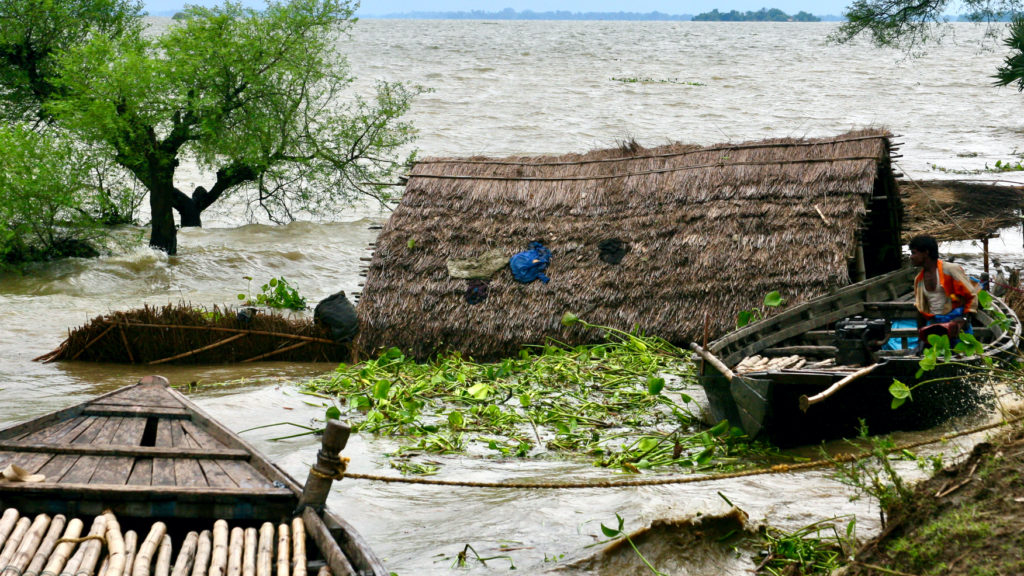
Mortality due to extreme weather events
Based on the India Meteorological Department’s data of the past five decades, authors of the recent paper documented 7,063 extreme weather events that killed 141,308 people, with an average of 20 deaths an event. At 46.1 per cent, floods were responsible for the maximum mortality, followed by tropical cyclones at 28.6 per cent. The contribution of heat and cold waves to total mortality was 12.3 per cent and 6.8 per cent, respectively, while lightning had the lowest mortality of 6.3 per cent.
However, when compared on the basis of mortality per event, tropical cyclones were more destructive (with an average of 345 deaths per event) compared to any other extreme weather event. The lowest mortality occurred with lightning, having only 3.5 deaths an event, notes the study (see table: Total mortality caused by various extreme weather events during 1970–2019).
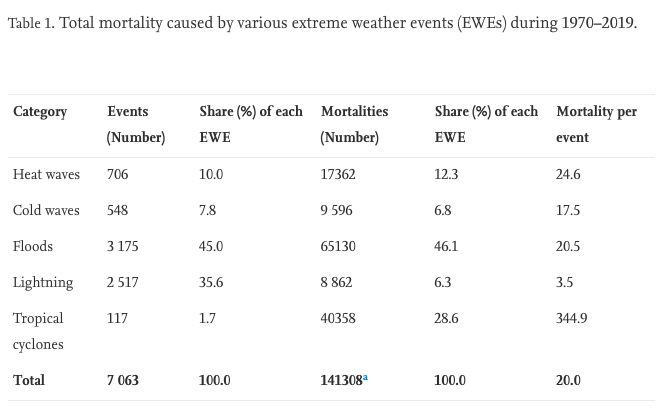
The authors go on to note that “even though the number of events is increasing significantly, mortality is either decreasing or not significantly increasing, except for lightning, where the increase in mortality rate is significant”.
Floods are responsible for almost half of the mortalities due to extreme weather events. The decadal analysis shows that mortality rates due to floods have been decreasing by 3-5 per cent in each decade from 1980 to 2009, and steeply decreased by 20 per cent in the last 10 years, despite the increase in the total flood events. The last decade witnessed some major floods — 2013 Uttarakhand floods (5,000 deaths); 2014 Srinagar floods (200 deaths); 2015 Chennai floods (214 deaths) and the 2017 Gujarat floods (17 deaths).
Meanwhile, mortality rates due to heat waves have increased by almost 27 per cent in 2010-2019 as compared to 2000-2009. There is also a corresponding increase (24 per cent) in the number of heatwave events. The decadal analysis of lightning events and their mortality rates showed a highly significant increasing trend over the decades, with the last decade having the highest number of events and death rates.
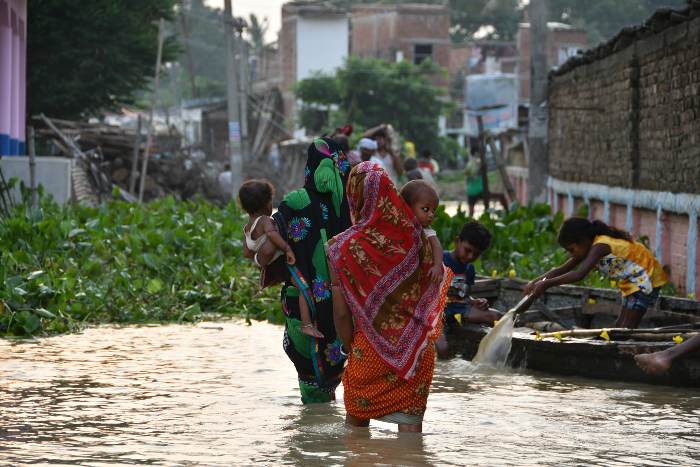
State-wise analysis
The recent paper of the earth sciences ministry shows the highest mortalities per year in the past 50 years were reported from Andhra Pradesh (which included Telangana state till 2014). This is followed by Odisha, Uttar Pradesh, West Bengal, and Bihar (see table: Total mortality (1970-2019) wise top 5 states for each extreme weather event).
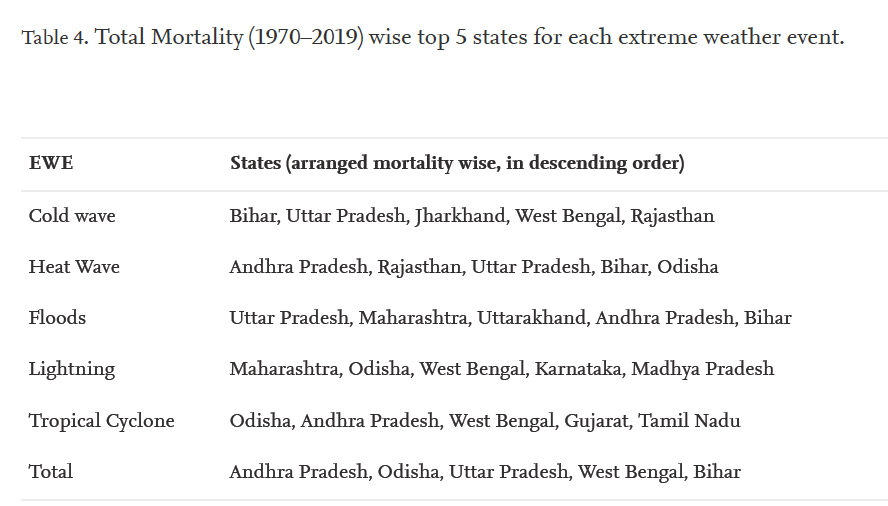
Event wise state-level analysis showed that Odisha reported the highest mortalities a year due to tropical cyclones, Andhra Pradesh had the highest mortalities per year due to heatwaves, Uttar Pradesh reported the highest casualties due to floods, and Bihar had the highest mortalities due to cold waves. The highest mortality due to lightning was found in Maharashtra.
Mortality due to heat waves was very high in Andhra Pradesh, Uttar Pradesh, Odisha, Bihar and Rajasthan while cold waves led to more mortalities in a few states of eastern and northern India, including Bihar, Uttar Pradesh and Jharkhand.
“The next thing we want to address is to estimate corresponding economic losses. Even though many people are not dying, there could be substantial increase in economic losses. We will come out with the results,” said Rajeevan.

